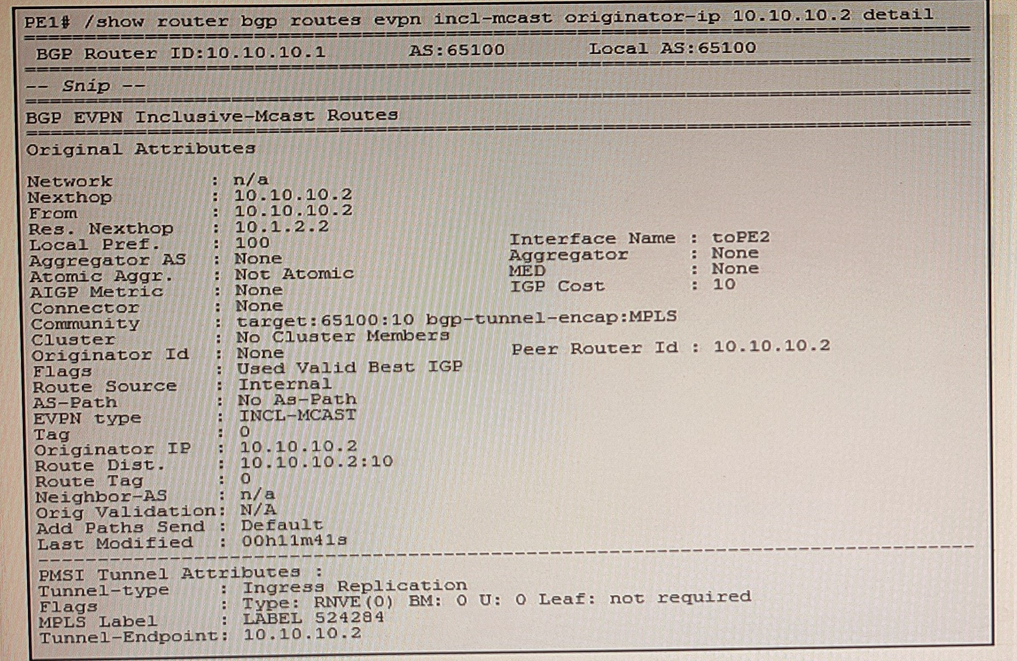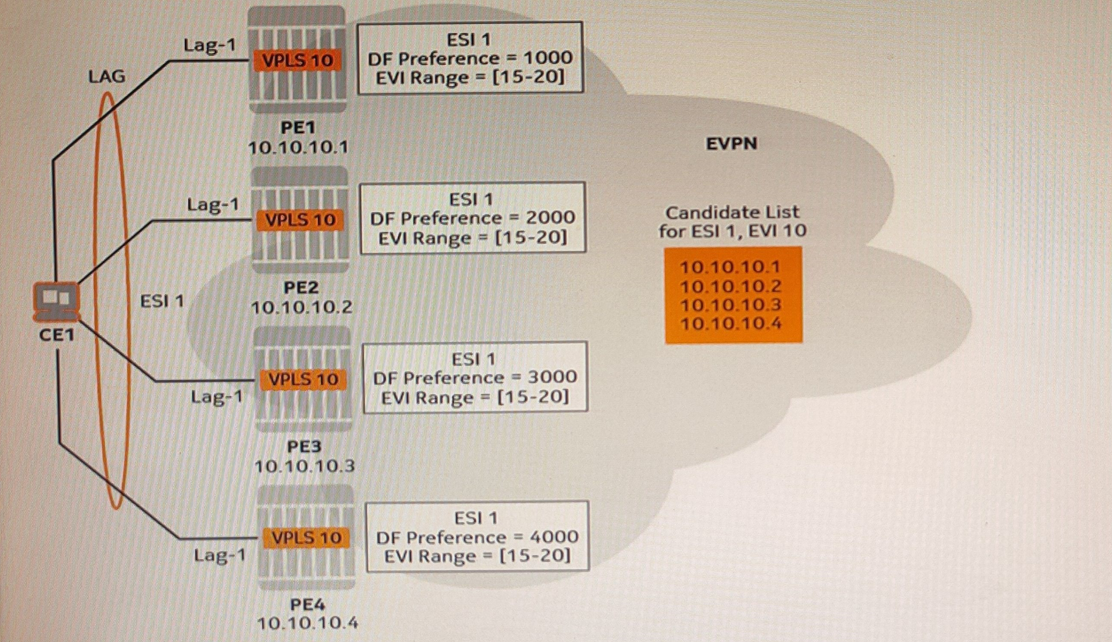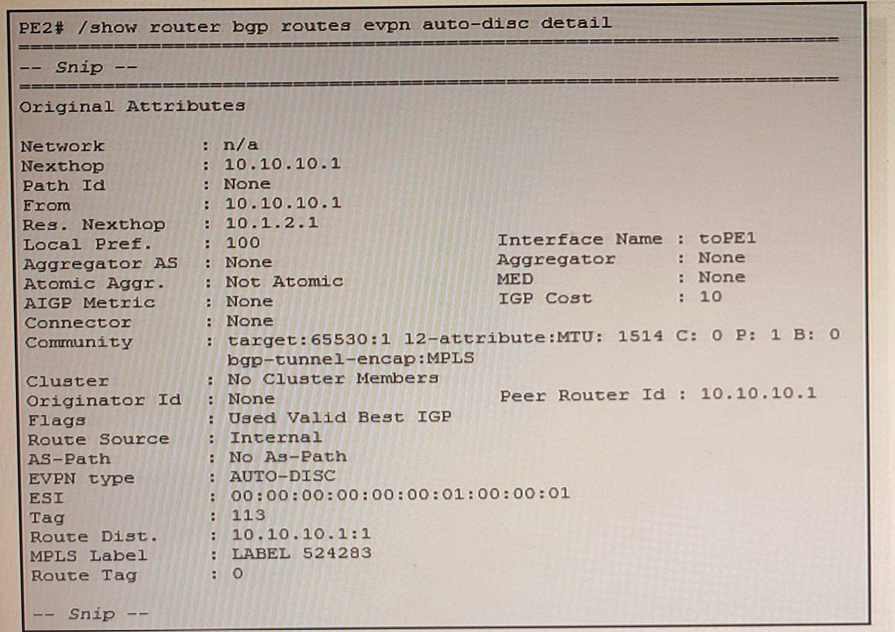Nokia Ethernet Virtual Private Network Services 4A0-115 Exam Practice Test
Which of the following statements about the EVPN data plane is FALSE?
Based on the exhibit below, which of the following statements is FALSE?

When forwarding BUM traffic, the local PE must replicate the traffic and send it as unicast to the advertising neighbor.
Answer : A
When forwarding BUM traffic, the local PE does not replicate the traffic and send it as unicast to the advertising neighbor. Instead, the local PE uses an MPLS transport tunnel towards the advertising neighbor and sends the traffic with an MPLS label that indicates the service.
Examine the exhibit.
Which of the following actions is performed by PEI after it receives a BUM packet from CEI?
Answer : C
PE1 sends the packet to PE2 and to PE3. An ESI label is included only in the packet sent to PE2. The ESI label is used to implement the split-horizon mechanism and prevent traffic duplication. The packet sent to PE3 does not need an ESI label because PE3 is connected to the same Ethernet segment as PE1.
In the exhibit, an EVI range is configured and the preference-based algorithm is used to elect the designated forwarder (DF) on ESI 1. Which PE is elected as DF for VPLS 10?

Answer : C
PE3 is elected as DF for VPLS 10. The preference-based algorithm uses the highest preference value of the PEs attached to the same Ethernet segment as the tie-breaker criterion. PE3 has the highest preference value among PE1, PE2, and PE3.
Which of the following EVPN routes are exchanged to support the operation of a multi-homed EVPN VPWS?
Answer : C
A-D per EVI routes, A-D per ES routes, and Ethernet segment (ES) routes are exchanged to support the operation of a multi-homed EVPN VPWS. These routes are used to discover all PEs associated with an Ethernet segment, indicate the redundancy mode of the Ethernet segment, and elect the designated forwarder for each service.
Which of the following statements about EVPN Layer-3 services that utilize the interface-ful model is TRUE?
In the exhibit, PE2 is receiving an EVPN auto-discovery (A-D) route from PEI. Based on the output, which of the following statements is FALSE?

Answer : D
This route indicates that the EVPN service is configured on PE1 with a service MTU of 1500, not 1514. The service MTU is indicated by the MPLS label value in hexadecimal format. The MPLS label value of 0x05DC corresponds to a decimal value of 1500.